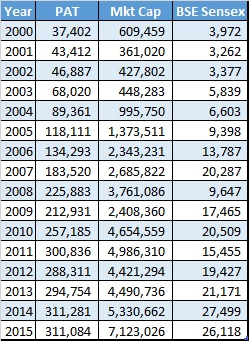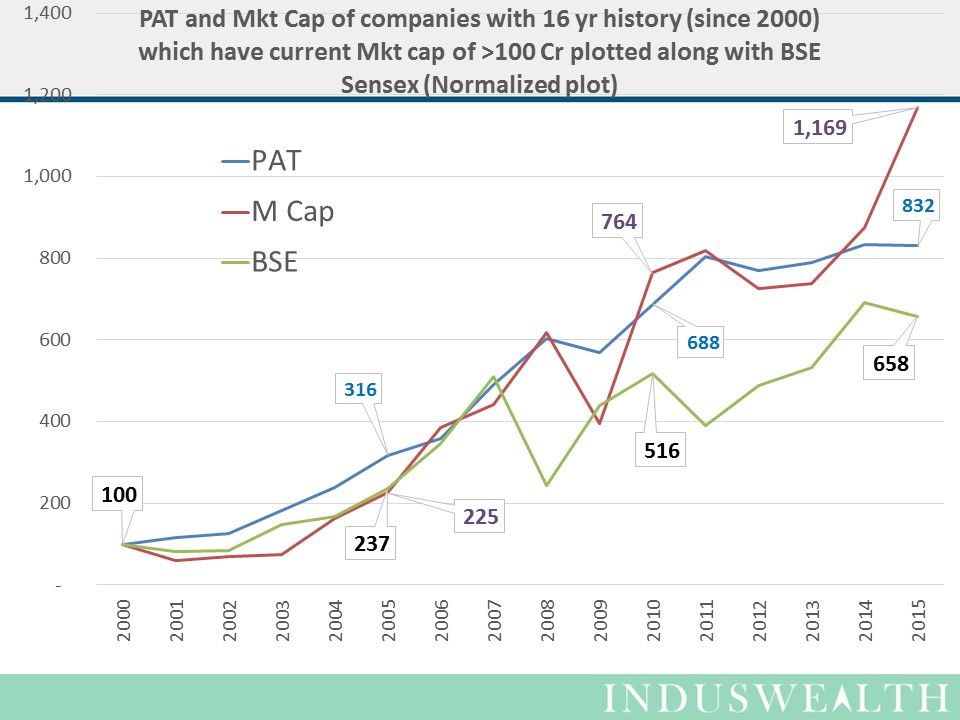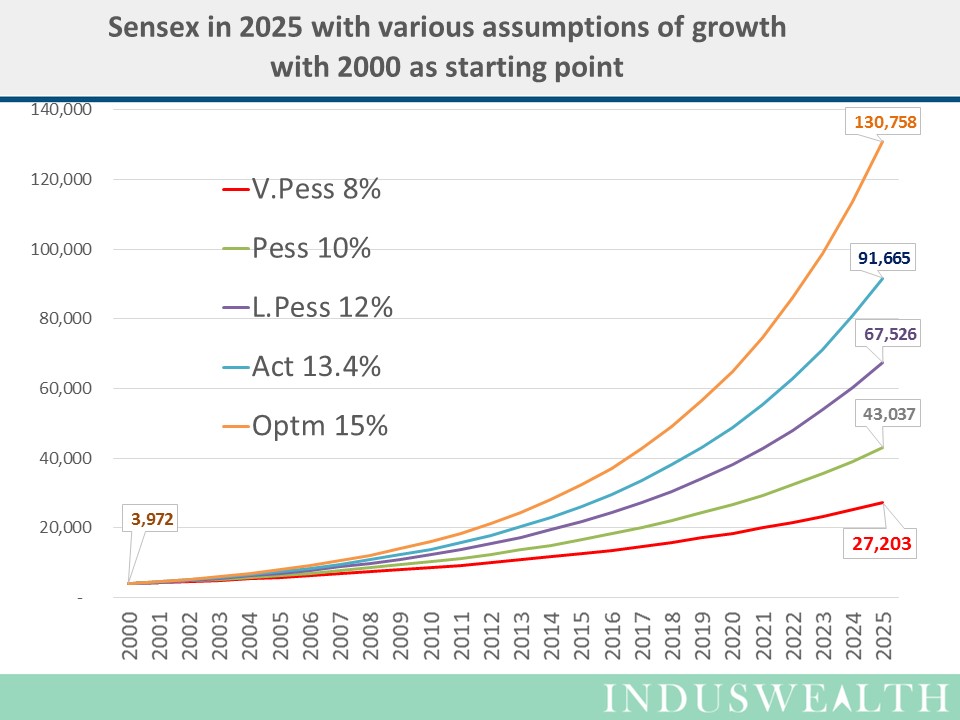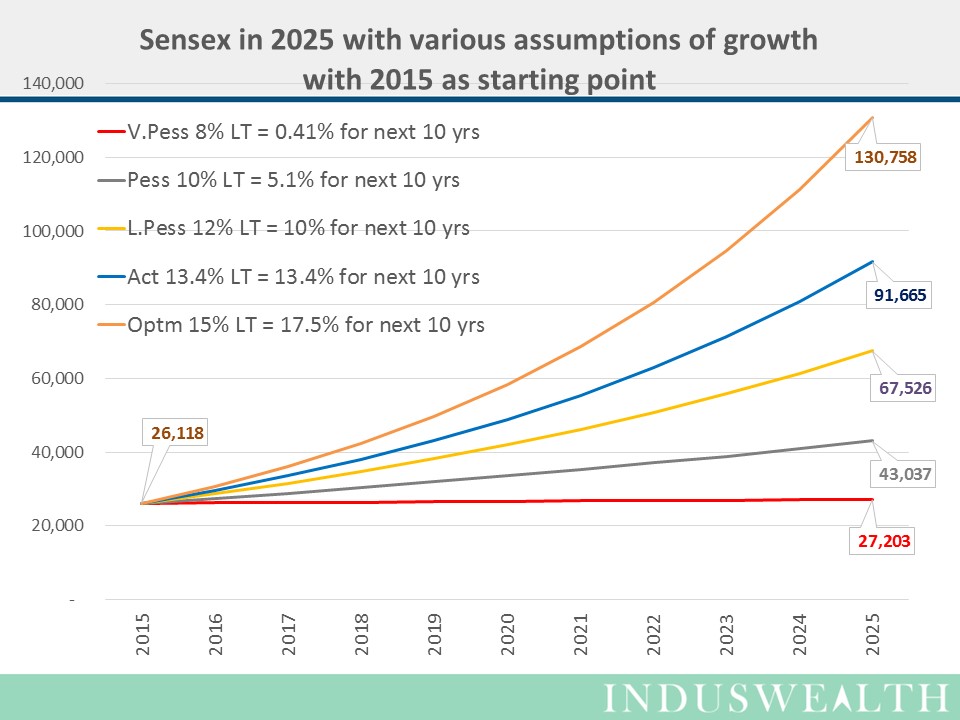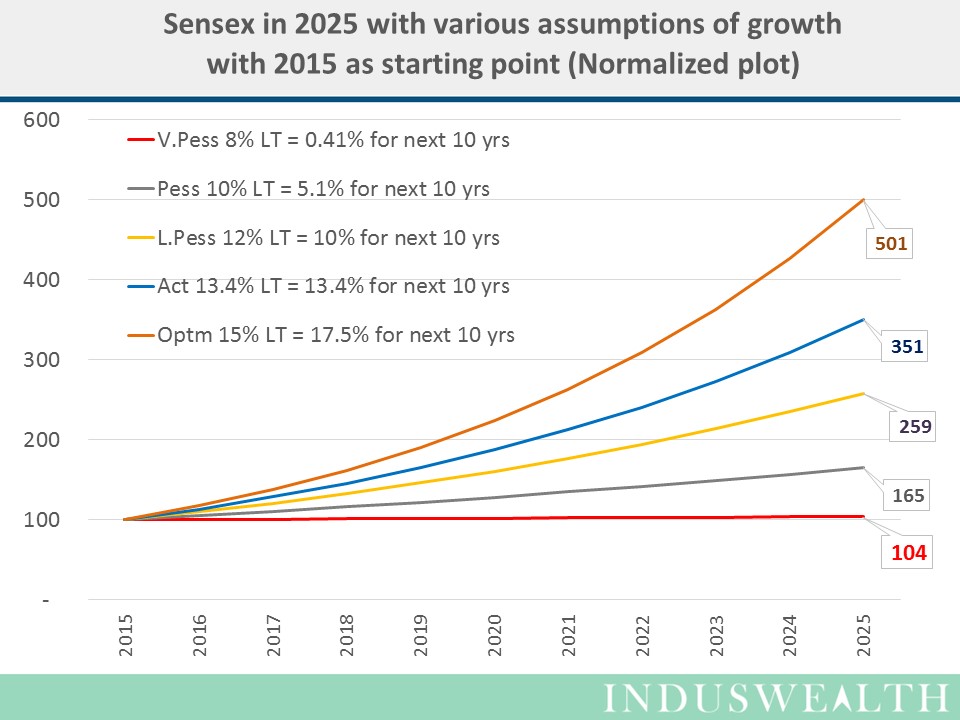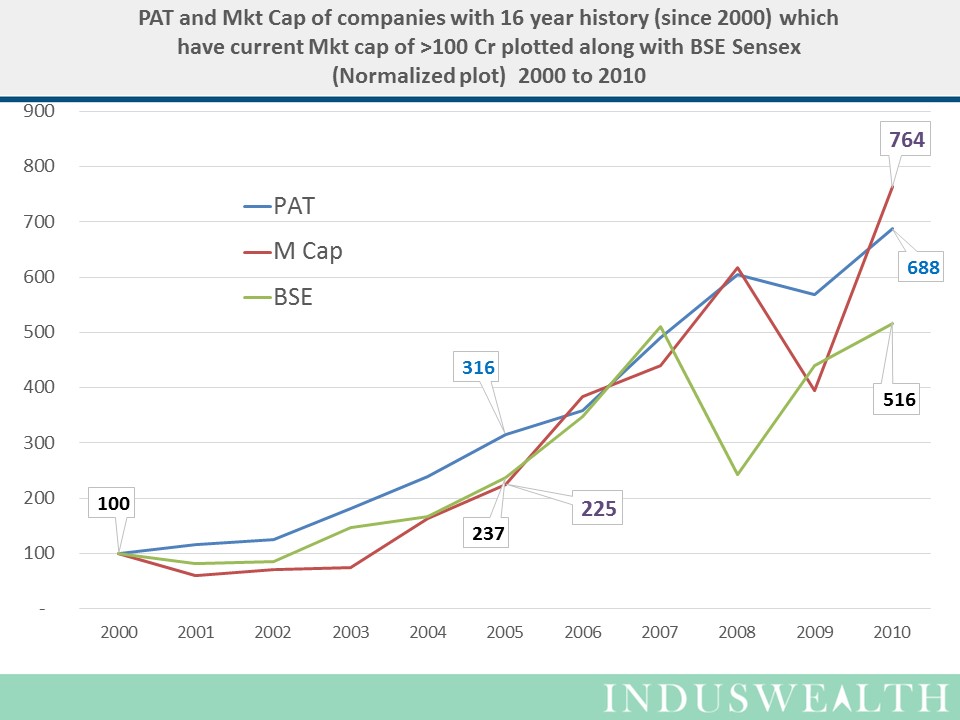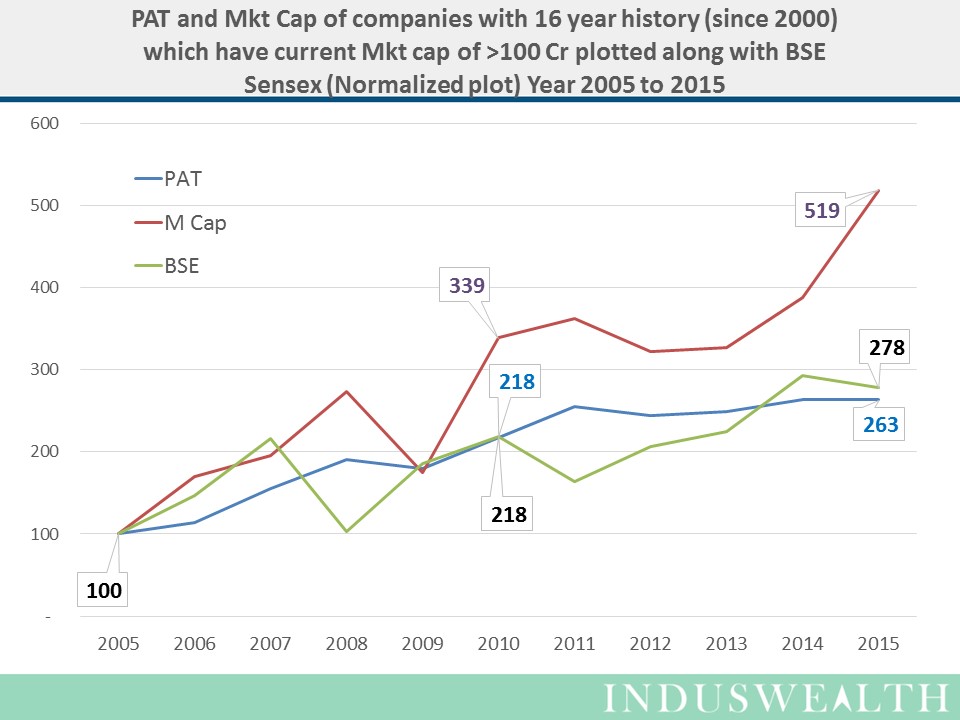P/E is about 22, should we be investing?
This question was on top of our mind when we were considering investment plans for May-2016. As usual, we thought we should let data answer the question.
We looked at all the companies that have current market capitalization of over 100 crores and have been listed since 2000.
We see that the profits of these companies grew at an yearly rate of 15.2%, market capitalization for these companies grew 17.8% annualized, in the same period Sensex grew at 13.4% annualized.
This means if one had invested Rs 100 in these companies in the year 2000 it would have grown to 1169, (about 11.7 times) by the end of 2015, the same amount invested in Sensex would have grown to 658 (about 6.6 times).
One of the reasons for the market capitalization of these companies to beat Sensex is that these companies had a very good profit growth. If their profits were Rs 100 in the year 2000, their profits were Rs 832 in 2015 (their profit growth exceeded Index growth)
One should note that the period of 2000 to 2015 had a few significant down turns as well.
Profit growth is one of the key drivers for the value of the company – which leads to its market capitalization (We hope you had a chance to read our article on importance of profit growth.).
We wanted to see the kind of long term growth one can expect in Indian markets and what it would mean for Sensex in 2025. We picked 5 scenarios.
- Very pessimistic scenario of 8% per annum (about India’s GDP growth).
- Pessimistic scenario of 10% per annum (Long term market capitalization growth experienced in US for over 70 years)
- Less Pessimistic scenario of 12% per annum (Long term US market capitalization growth of 10%+ 2% additional inflation experienced in India)
- Actual growth of 13.4% – this is the growth experienced by Sensex in last 16 years.
- Optimistic growth of 15% – this is about 75% of the GDP growth experienced by China in the last 15 years.
We picked year 2000 as the starting year and looked at various outcomes in 2025
Index value in the year 2025 for in various scenarios ranges from 27,000 (which is a 7 times increase over 26 years) to 130,000 (which is a 33 times increase over 26 years).
Trajectory followed by Sensex will surely not be smooth, here the attempt is to take a guess at the possible value of Sensex in 2025.
The above chart is useful as this is giving us an idea of the Index value based on long term growth rates applied over a quarter of a century. This however is ignoring the current market reality, i.e., Sensex is currently around 26,000, so let’s explore what Sensex should be doing from this point on to realize the long term growth projections.
In the very pessimistic scenario (8% long term growth rate) Sensex should be at 27,200 in year 2025 this means Sensex should grow at 0.41% annually for the next 10 years. In the Optimistic scenario (15% long term growth rate), Sensex should be at 130,760 in 2025 that means Sensex should grow at 17.5% annually for the next 10 years.
In the next decade, we are looking at a range of 1x in the very pessimistic case to 5x in the optimistic case.
We believe that very pessimistic case of 8% LT growth means that is going to be no growth in the market for next decade – which we feel is a highly unlikely. Similarly the Pessimistic scenario of 10% LT growth is expecting 5.1% growth for next decade. 5.1% growth is less than projected GDP growth rate for India and hence we feel it is also fairly unlikely.
We believe that in 2025, Sensex could be in the range of 60,000 (about 9% annual growth for 10 years) to 120,000 (about 14.5% annual growth for 10 years).
- Sensex at 60,000 means it grows 2.5 times in the next decade.
- Sensex at 120,000 means it grows 5 times in the next decade.
Let’s look at past data to see the growth over a decade. We will use data for Sensex and companies with current market cap over 100 crore and which were listed since 2000
We believe that periods of 2000 to 2010 and 2005 to 2015 can be considered reasonably representative for predicting Sensex growth for the next decade, as both these periods have had a variety of market events, international events, political changes that could continue in the next decade.
If Sensex in 2025 is in the range of 60,000 to 120,000 that means one can expect a well diversified equity portfolio to grow in the range of 9% to 14.5% annually, this translates to 2.5X to 5X growth.
Does this mean it is ok to invest when the market P/E is close to 22?
In our white paper “Investment strategy for long-term investors in a market where PE is high”, we discussed that when P/E is above 22, expected return is in the range of 6.8% to 12.9% with an average of 10.5%, but one should have an investment horizon of at-least 3 years and to be on the safer side it should be about 5 years.
Few facts and conclusions that can be made from this analysis
- As the P/E is around 22, it is more difficult to find good companies which offer long term value (we can attest to that)
- Current market levels mean that investors investing now should have a horizon of 5 years.
- The long term projections of Sensex for the next decade may not sound very exciting as the growth range we are anticipating is between 9% and 14.5%. But this growth rate cannot be taken lightly as this will be far better than many other investment opportunities.
I believe that all predictions are invariably wrong and they vary only in the extent of their incorrectness.
I believe that there are many factors that could make our projections go horribly wrong. But, if someone offered me a reasonable chance that I would get about 9% annually over the next 10 years, and about 1% in dividends – all of these tax free, I would have not have much hesitation taking them up on their offer.
We did this analysis to help us make our investment decisions and hope that you find it informative.
Happy investing….
